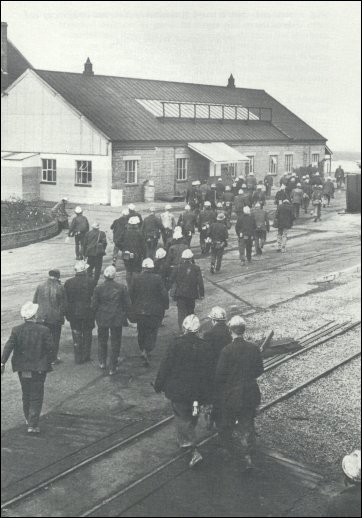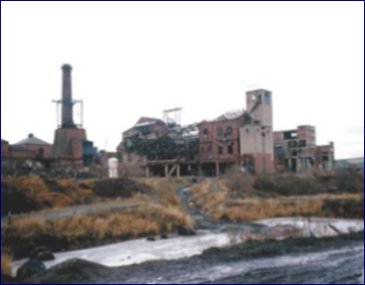 |
| End
of shift at Betteshanger Colliery, Kent. Photo: Val Wilmer/Format |
...
 |
| End
of shift at Betteshanger Colliery, Kent. Photo: Val Wilmer/Format |
...
 |
 | ||
| Pit Closures AFTER THE defeat of the strike everything that the NUM and the more forward-looking members of the Labour and Trades Union movement had predicted came true, as the government wielded the axe of their pit closure programme with the utmost brutality. Seventeen pits were closed by the end of 1985 alone and in the next ten years, not only was the mining industry privatised, but the number of pits dwindled to the pitiful nine former Coal Board deep mines that remain in 2004. Not only have pit villages lost their source of employment but entire regions have lost all their pits – the huge mining areas of Scotland, Durham, Lancashire and others now don't have a single pit, while Wales has just one. Below is a table of what remains of our mining industry in the new millennium. There was a temporary setback to the Tories' plan in 1992 when an announcement in parliament by Michael Heseltine that 30 pits were to close sparked off a massive country-wide outcry with two huge demonstrations in London in a matter of weeks showing the true mood of public opinion. But sadly, the Labour and Trades Union leadership let the opportunity for action slip and the pit closure program went ahead delayed only by a few months. There were 170 pits when the strike began, employing 181,400 men and producing 90 million tonnes of coal a year. The nine pits at the close of 2004 employ just 3,909 men and less than 10 million tonnes will be produced. Current figures on coal mines and coal production can be monitored on the official Department of Trade and Industry (DTI) website by clicking HERE. These figures also reveal that Britain is now a heavy importer of coal. In 2003 we produced 27.7 million tonnes of coal at home (15.6 million tonnes from deep mines and 12.1 million tonnes from open cast sites) yet the same year we imported 31.9 million tonnes from abroad. The four pits already closed in 2004 will result in our home-produced output declining by 25 percent in 2004, so we'll have to import that amount to make up the shortfall. Bonkers is just a polite word to describe what's going on. What were once living pit communities have declined into high unemployment zones with little future for the children who have grown up there since the strike. Many of the miners who were once gainfully employed were thrown on the scrapheap of middle-aged unemployment or forced into low paid service-sector jobs paying a fraction of what they earned at the mine. The pit-head gear that could once be seen from all around has been blown up and the pit entrances sealed up for ever. Some of the mining equipment that wasn't destroyed has been put into mining museums instead. Weeds that were kept down by the tread of thousands of men going to and from work in three shifts a day have colonised the surface of the mine, and silence reigns where once was the noisy clamour of people going about their daily work. | |||
|
Date this page updated: September 29, 2006 | |||
 |
| Closed pit South Yorkshire. Exact date unknown. Date: 8/2/85. Copyright John Harris. E-mail: j.harries@reportsdigital.co.uk. NUJ recommended terms and conditions apply. Moral rights reserved under Copyright Designs and Patents Act 1965. Credit is required. No part of this photo is to be stored, reproduced or transmitted by any means without permission. Website: http://www.reportdigital.co.uk |
BRITISH DEEP MINES AT THE END OF 2004 Mine Manpower Annual Output (million tonnes)
UK COAL PLC OWNED DEEP MINES..... Thoresby, Edwinstowe, Notts Welbeck, Nr Mansfield, Notts Daw Mill, Nr Coventry Harworth, Nr Doncaster, Yorks Rossington, Nr Doncaster, Yorks Maltby, Nr Rotherham, Yorks Kellingley, Knottingley, W Yorks NON UK COAL PLC OWNED DEEP MINES..... Tower, Aberdare, S Wales TOTAL